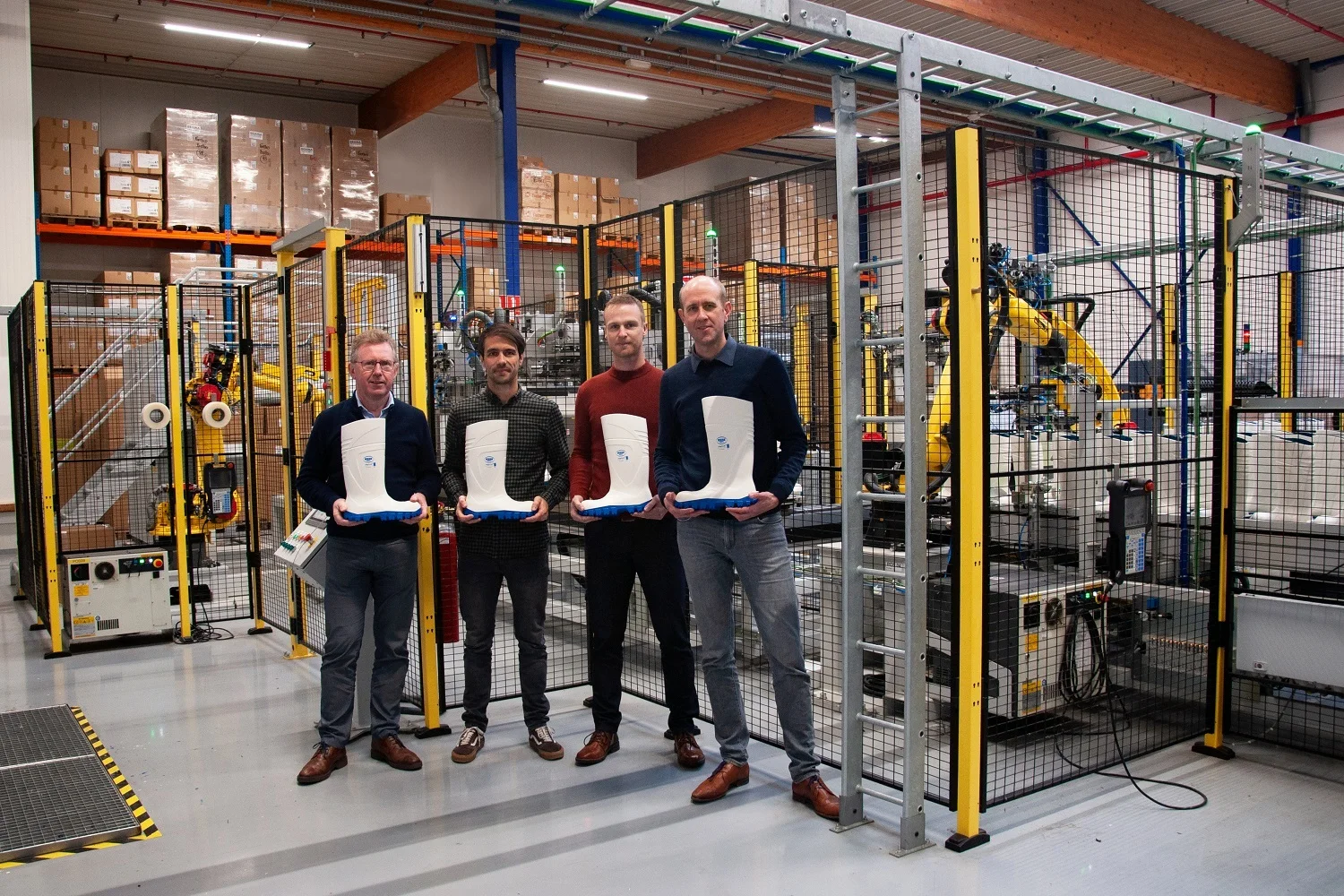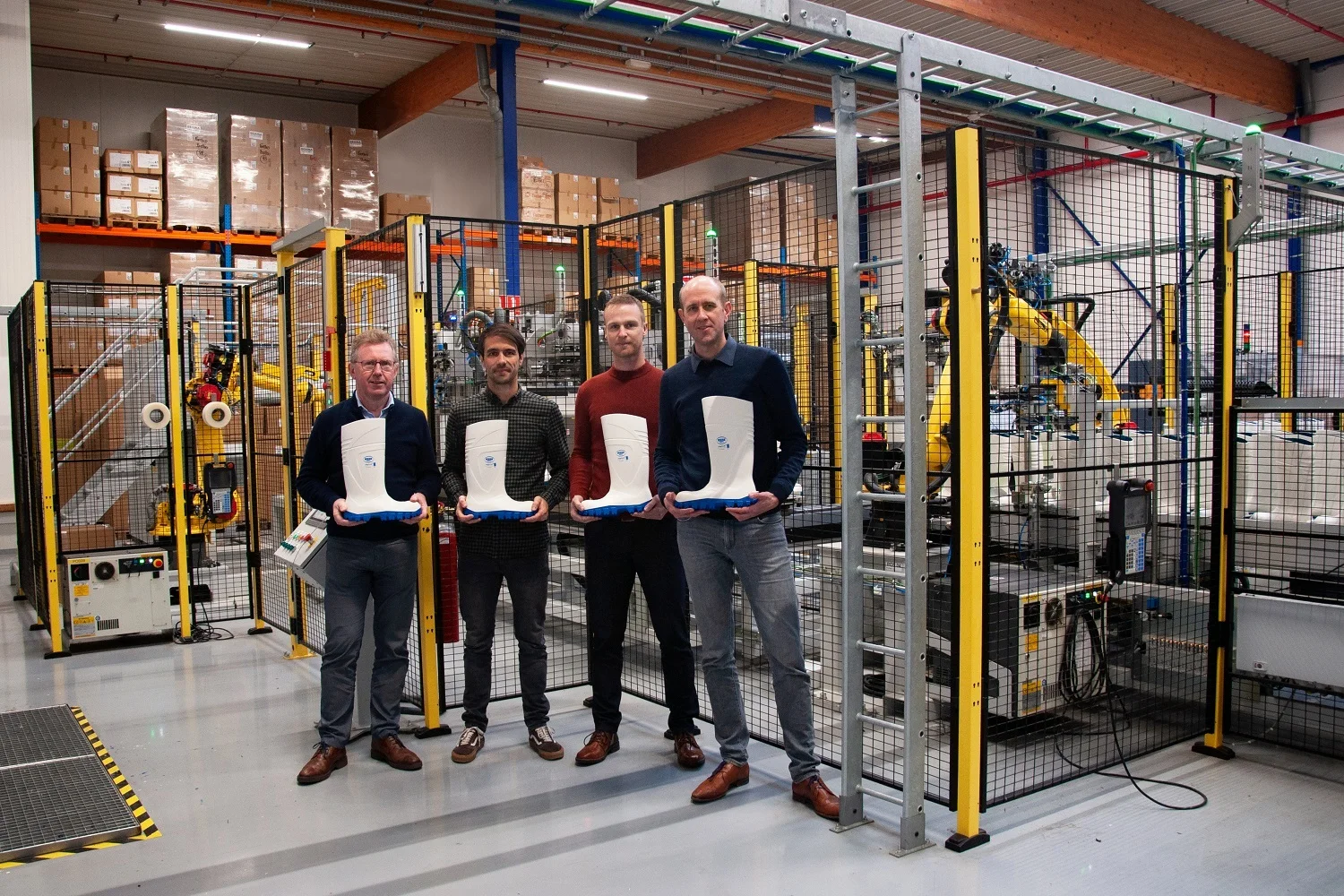Following the production process, you chose to automate the finishing of the boots as well. Was this a necessity?
Thomas Vanderbeke: “Indeed it was. We were gradually starting to hit our peak capacity. To cope with the expected growth over the coming years, it has become increasingly clear that further automation is required. With this new installation, we are first and foremost eliminating five manual operations, thereby speeding up the finishing and packing processes. This also allows us to finish the boots in a more stable and consistent manner. The lasering of the unique code on the inside of the boot, along with the stamping of our logo on the outside, are now both entirely automated, guaranteeing that these are done in exactly the same place on every boot. Two birds with one stone!”
Frederiek Vanassche: “In addition, space has been provided within the installation to add additional machining stations. By doing so, we are prepared for even greater production, as well as more advanced automation in the future."
Thomas: “Future-proofing was a key prerequisite when it came to this installation. As we have grown accustomed to with Fraxinus, you were able to gain a quick understanding of what we were looking for, with the installation more or less worked out at the offer stage. This thorough preparation reassured us that the installation would effectively meet our high expectations.”

